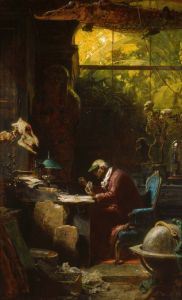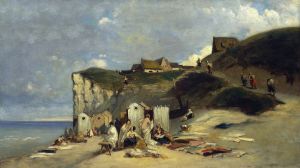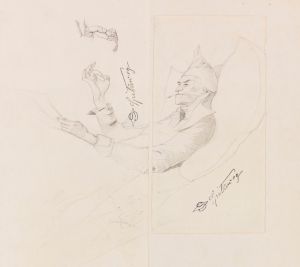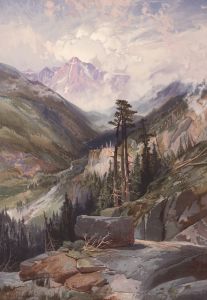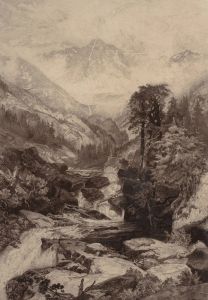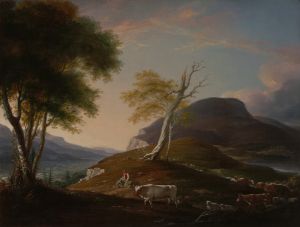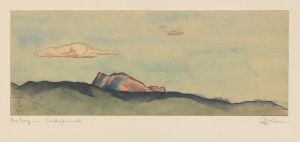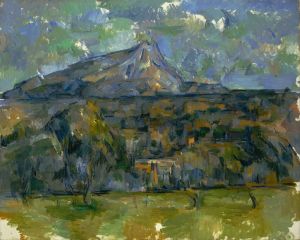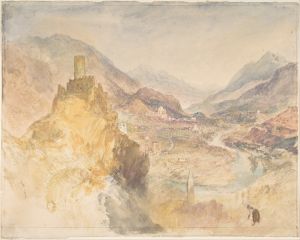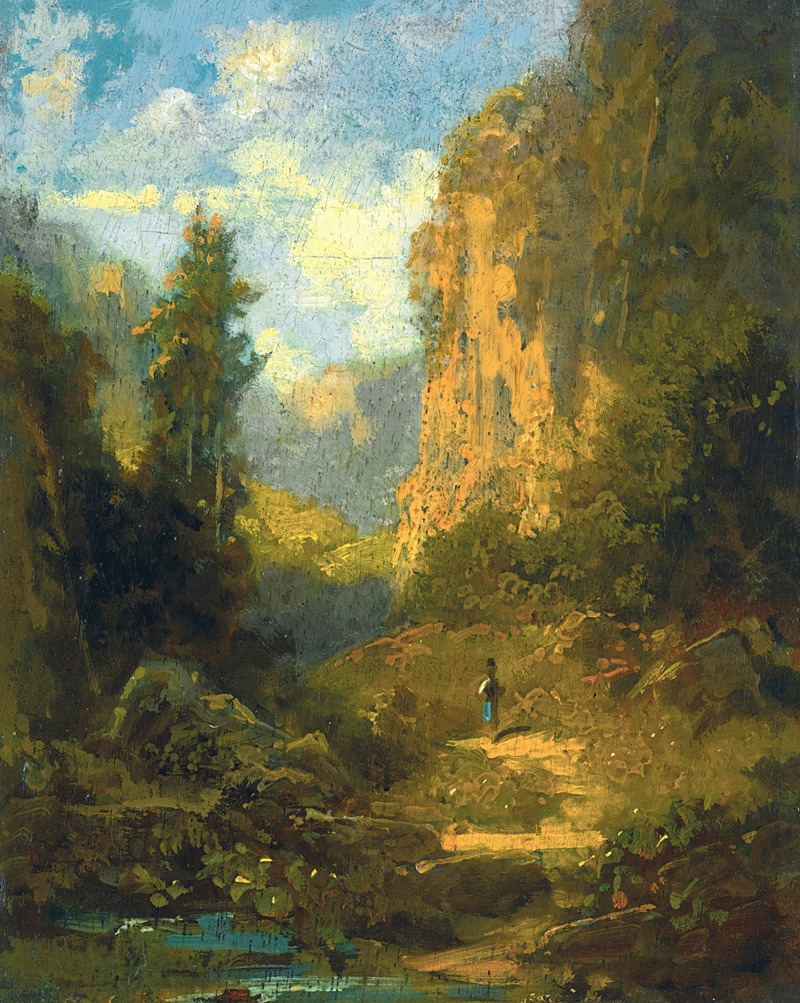
Gebirgslandschaft
A hand-painted replica of Carl Spitzweg’s masterpiece Gebirgslandschaft, meticulously crafted by professional artists to capture the true essence of the original. Each piece is created with museum-quality canvas and rare mineral pigments, carefully painted by experienced artists with delicate brushstrokes and rich, layered colors to perfectly recreate the texture of the original artwork. Unlike machine-printed reproductions, this hand-painted version brings the painting to life, infused with the artist’s emotions and skill in every stroke. Whether for personal collection or home decoration, it instantly elevates the artistic atmosphere of any space.
Carl Spitzweg was a 19th-century German romanticist painter known for his detailed and often humorous depictions of everyday life. One of his works, "Gebirgslandschaft," which translates to "Mountain Landscape," is a testament to his skill in capturing the serene beauty of nature. Although specific details about this particular painting are scarce, it is consistent with Spitzweg's broader oeuvre, which often includes landscapes and genre scenes.
Spitzweg was born on February 5, 1808, in Unterpfaffenhofen, Bavaria, and initially pursued a career in pharmacy before turning to art. His self-taught background did not hinder his ability to create evocative and technically proficient works. He was influenced by the Biedermeier style, which emphasized a return to simplicity and the depiction of everyday life, often with a touch of humor and irony.
"Gebirgslandschaft" likely reflects Spitzweg's interest in the natural world and his ability to infuse his landscapes with a sense of tranquility and subtle narrative. His landscapes often feature idyllic scenes that invite viewers to contemplate the beauty and majesty of nature. Spitzweg's use of light and shadow, along with his attention to detail, creates a sense of depth and realism that draws the viewer into the scene.
Spitzweg's work is characterized by its meticulous detail and the ability to capture the essence of his subjects, whether they are people or landscapes. His paintings often include small, anecdotal elements that add a layer of storytelling to the visual experience. In "Gebirgslandschaft," one might expect to find such elements, perhaps in the form of a small figure or animal that adds life to the serene mountain setting.
Throughout his career, Spitzweg remained relatively independent, not aligning himself with any particular art movement or school. This independence allowed him to develop a unique style that combined elements of romanticism with a keen observation of the world around him. His works are celebrated for their charm, wit, and the ability to capture the spirit of the 19th-century German bourgeoisie.
Spitzweg's paintings, including "Gebirgslandschaft," are housed in various collections and museums, reflecting his enduring popularity and the appreciation for his contribution to the art world. His ability to convey emotion and narrative through his art continues to resonate with audiences today.
In summary, while specific details about "Gebirgslandschaft" are limited, it is representative of Carl Spitzweg's broader body of work, which is characterized by its attention to detail, narrative quality, and the ability to capture the beauty of everyday life and nature. Spitzweg remains a significant figure in 19th-century German art, and his works continue to be celebrated for their charm and technical skill.







